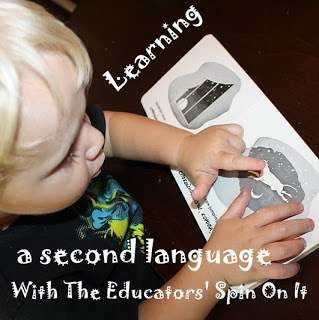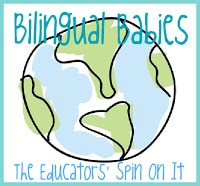
Bilingual Babies – Finding Second Language Resources
I was recently asked where I find the resources that I use to teach our children Russian. This is an excellent question and although I will tell you where to find resources to teach Russian as a second language, you can use these same ideas to find the language your family is learning!
How to Find Second Language Resources for your Child
1. In-laws and Friends – The first place I always start is by asking anyone who lives in Russia to send or bring us learning materials. The things I ask for are
- Traditional books, (not an English book translated into Russian, but a true Russian written book).
- Talking books or books with a battery component
- ABC puzzles and blocks
- Kids workbooks and educational primers
- Learning Posters
- CD’s and DVD’s Sesame Street (Улица Сезам) is produced in many countries around the world and is an organization I would recommend looking into. The show format is the same and they address age appropriate concepts, but videos do not just translate the USA version, rather are created specifically for that country.These DVD’s are not readily available due to cost (around $20 each), but my in-laws are able to pre-order them from one specific media store in their city.
2. Another way to get some of the above items are through online stores such as Amazon. This gets tricky with languages like Russian because materials are not as readily available, but some products do exist.
3. YouTube – there are many videos available in other languages, but I strongly urge you to PREVIEW without children present. Some of the content is not appropriate for children. I have several videos on our playlist and will let the children watch them once in a while. Here are some links to the Russian videos I may show my children.
- The Alphabet Song
- The ABC’s
- Song and Pictures about Bugs
- Farm Animals
- Bear Cartoon
- Children Putting on a Puppet Show
We’ve even made our own YouTube videos, which brings me to the next way we get our learning resources!
4. Make your own. We often find ourselves making the majority of our own learning materials.
- My husband translates books, magazines, and posters. He just writes the Russian translation into the book using a permanent marker next to the words in English. Here are some more ideas!
- He will also write a sentence on a piece of paper and let the children illustrate it to create our own simple posters. We have been talking about spring this week and each child told him what they liked to do outside in the spring. It says, “I like to swing on the swing in spring,” in Russian of course!
We then put these pictures on our fridge and re-visit them daily to give the children multiple exposures to the vocabulary. I may ask her to point to a specific word, read it to me, or tell me something else she likes to do in the spring.
- I also make worksheets and easy reading books for the kids. My most recent packet uses dot-markers to learn the Cyrillic Letters.
It is available for purchase at Teachers Notebook.
Both Kim and I are trying to parent with purpose. We feel that early and continued exposure to another language is important for our children. On many Mondays we will continue to bring you helpful tips, advice, and stories on our adventures raising bilingual children.
Although I am teaching my children Russian and she is teaching her children Hindi, the tips, advice, and stories may inspire you to spend more time interacting with your children in the language your family chooses!
Save







Average Rating